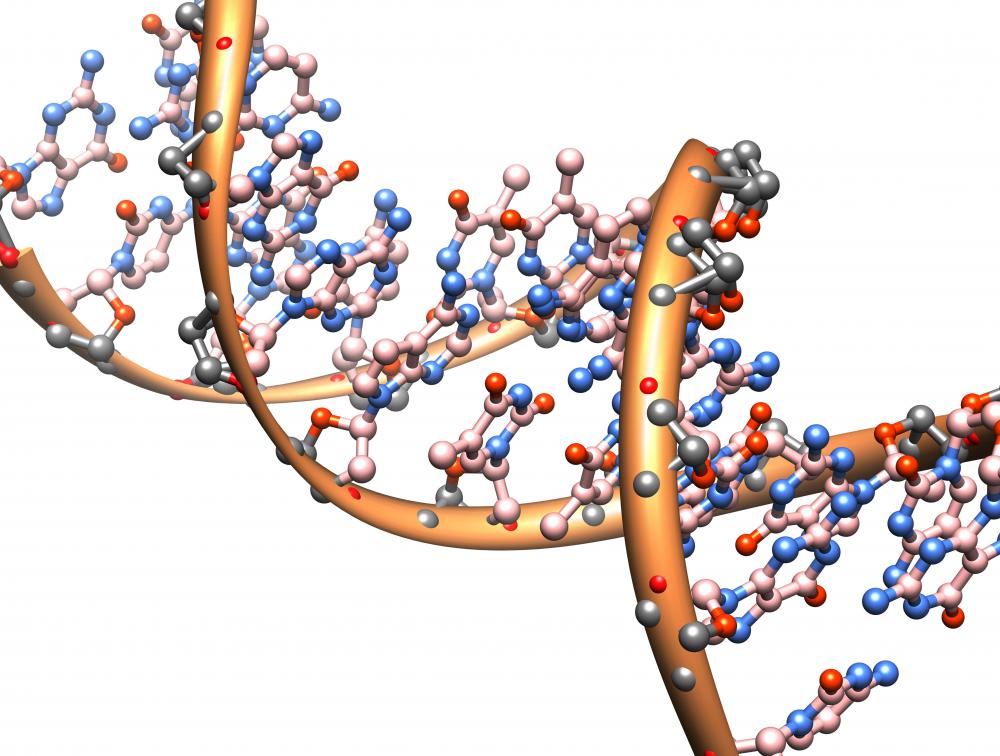At WiseGEEK, we're committed to delivering accurate, trustworthy information. Our expert-authored content is rigorously fact-checked and sourced from credible authorities. Discover how we uphold the highest standards in providing you with reliable knowledge.
What Is Polyacrylamide Gel?
Polyacrylamide gel is a solution commonly used in electrophoresis, the process of separating out different sized molecules or particles by passing them through a gel and applying electrical current. There are different recipes for polyacrylamide gel, but it typically contains acrylamide, water, a buffer, ammonium persulfate (APS), and tetramethylethylenediamine (TEMED). This gel functions as a matrix that separates out compounds based on their charge and size; the more acrylamide in the gel solution, the better separation of smaller molecules. Typically this gel is used for protein and DNA separation.
In electrophoresis, an electrical field causes charged particles to move through a gel, which functions like a sieve to cause the different sized particles to separate. The gel will absorb any heat produced from the electrical current. Polyacrylamide gel is commonly used in these procedure, but agarose, another chemical that creates a similar gel, can also be used.

Gels can be made of varying concentration, with the amount of acrylamide ranging from about 6% to 15%. When mixing up the gel, the acrylamide is unpolymerized, meaning that it remains as single molecules. The addition of other chemicals that promote binding, such as TEMED, causes the molecules to link together forming long chains — the "poly" part of polyacrylamide.

The main advantage of polyacrylamide gel is that the number of linkage bonds and hardness can be controlled based on the initial amount of acrylamide and TEMED added. A main factor in acrylamide concentration is the size of the molecule being analyzed. The smaller the compounds being separated, the more acrylamide is needed; very small particles are separated using the highest concentration, 15 percent.
Acrylamide works by controlling the amount of friction in the gel; the hardness of the gel determines the amount of friction. Compounds that are large will move through the gel more slowly as there is naturally more friction or resistance because of their size. Smaller compounds move faster, as there is less friction. To prevent small compounds from moving off the gel, more acrylamide is added to create more friction.
DNA polyacrylamide gel is used to separate DNA strands of different length. Pieces of DNA will separate by as little as one nucleotide, the compounds that make up each strand. In order to know which pieces refer to the specific sizes, a standard that contains fragments of a known size is commonly run along with samples. The DNA pieces are then compared to the standard, and the size of the strand is determined.
A similar procedure is used to determine the size of proteins, most often those in blood. Blood contains two main types of protein: globulin, a large sized protein, and serum albumin, a very small, negatively charged protein. Separation using polyacrylamide gel is used to determine the quantity of each type.
AS FEATURED ON:
AS FEATURED ON:












Discussion Comments
Great explanation, thorough, clear and to the point. I always had issues with any chemistry course. I always had to work triple time or more for chemsitry to get a B.
Post your comments